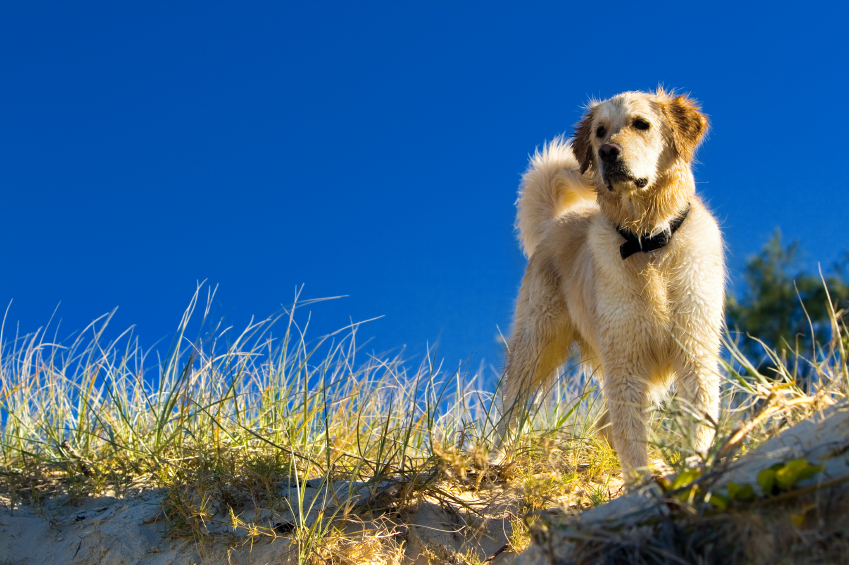The TPLO Procedure for Pets
 Injuries to the cranial cruciate ligament (CCL) are one of the most common orthopedic problems seen in dogs. Similar to an ACL injury in a person’s knee, dogs often rupture or strain their CCL (for a variety of reasons), which can render the knee joint unstable for your pet. Unfortunately, this can be an extremely painful condition for your canine companion if it is not remedied.
Injuries to the cranial cruciate ligament (CCL) are one of the most common orthopedic problems seen in dogs. Similar to an ACL injury in a person’s knee, dogs often rupture or strain their CCL (for a variety of reasons), which can render the knee joint unstable for your pet. Unfortunately, this can be an extremely painful condition for your canine companion if it is not remedied.
Thankfully, dogs do not have to live their lives with this condition. There are several surgeries that can be performed in order to re-create a stable joint. For many of the dogs we evaluate at Oakland Veterinary Referral Services, the surgery of choice is the Tibial Plateau Leveling Osteotomy, or TPLO.
How a CCL Injury is Diagnosed
Most pets that have a CCL injury will have a sudden onset of a pronounced lameness in a hindlimb. Often, but not always, there is a history of intermittent problems with that leg leading up to the lameness.
When we evaluate a pet with a CCL injury, often a good physical exam will result in a diagnosis. Most times we will be able to feel what is called a cranial drawer sign in the affected knee. Some pets may need to be sedated in order for us to detect this, due to the pain they are in. Likewise, radiographs (x-rays) or more advanced imaging such as an MRI will be recommended to evaluate the extent and nature of the problem within the knee joint.
About the TPLO Procedure for Pets
A TPLO is a very specialized procedure that is best performed by a board certified veterinary surgeon such as Dr. Henney. During the procedure, the surgeon makes a cut in the top of the tibia bone. This cut is then rotated so that the femur makes contact on the tibia in a stable position.
This procedure is specifically suited to medium to large breed dogs with a fairly active lifestyle. It offers a durable, lifelong repair with the ability to resume normal activity fairly quickly.
What Happens After TPLO Surgery
Recovery from a TPLO surgery is surprisingly fast. Most dogs will start bearing weight on the limb within a week or two. Generally the limb is entirely healed within 1-3 months.
After surgery it is important to restrict your pet’s activity to leash walking so that your dog does not fall, jump, or play rough. Too much activity too soon could affect the results of the surgery. Many times additional therapies will be recommended. These may include:
Anti-inflammatories – Many dogs that have a CCL injury have or will have arthritis in their knee joint. Anti-inflammatory medications are often prescribed to help alleviate discomfort associated with these types of changes as well as post-operatively to decrease pain and inflammation.
Nutraceuticals – Joint supplements such as glucosamine may be recommended for your pet in order to promote overall joint health.
Stem Cell Therapy – These amazing cells have the ability to heal and regenerate damaged tissues. Some pets may benefit from stem cell therapy during or after a TPLO surgery.
Electro Shockwave Therapy – This therapy utilizes high pressure sound waves to encourage healing and reduce pain.
Laser Therapy – Some pets may benefit from cold laser therapy which uses light energy to stimulate healing and reduce inflammation.
Cryotherapy – For many patients we use a Game Ready cryotherapy unit to “ice” the surgical site, reducing pain, swelling, and inflammation.
Weight Management – One of the biggest factors in a successful outcome is keeping our patients at an ideal weight. We work with our clients to develop a nutritional and exercise program for their pet.
TPLOs are one of the most common orthopedic procedures we perform, and we are happy to be able to offer this option to our patients with cruciate disease. Together with your help, we are able to offer excellent outcomes and a great treatment option for many of our patients with CCL disease.
If you think your pet or your patient may benefit from a TPLO procedure, please give us a call to schedule a consultation.


